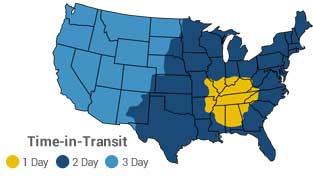Description - Creating a soft surface for your workout can save you a lot of aches and pains. The Endura Series Foam Sports Tiles are a great addition to your workout and will keep you comfortable during to complete your workout day after day. Our Endura tiles are made with EVA foam and absorb sound as well as impacts and come with a lightly textured surface to aid in grip even when wet. EVA foam tiles are a great choice for workouts because they are water and mildew resistant and can be cleaned easily at the end of every session.
The Endura Series tiles come with two removable edges on every piece, allowing you to make a square or rectangular workout area with a finished edge. These tiles are also insulating, transforming a cold basement or a hard wood floor into a workout area for you and your family. Interlocking EVA foam tiles are the most popular choice for working out on soft surfaces. They are easy to install and remove and can make the difference in the comfort and longevity of your workout routines.
Note: EVA foam is subject to puncture by sharp objects such as animal nails, high heels, and moving furniture.
Material – Closed cell EVA foam rubber
Size – 2' x 2'.
Thickness – ~5/8"
Weight – Tiles weigh approximately 1.25 Lbs. each.
Recommended Uses – Soft tiles are a great solution for many work-outs where you don't want to be on a hard floor. Keeping yourself comfortable while doing crunches, yoga, and other workouts on a soft surface helps keep you working out day after day. Foam tiles also protect hard surfaces from scuffs and scratches while working out.
In Stock - Ships between Jul 29 - 30
Installation of interlocking tiles is very simple and typically done by the consumer. Typical installation of these tiles is as follows:
- First, clean your sub floor so it is free of all dirt, grease or debris.
- Start in one corner of the room with a corner tile and add border tiles outward along the adjacent walls. Add center, corner, and border tiles where you see fit.
- When coming up to an opposite wall, make sure you cut the tiles to fit the area leaving a gap that’s roughly the thickness of the tiles being used to account for expansion and contraction of the floor tiles in varied temperature ranges.
Note: When piecing interlocking tiles together, adhesives are usually not used since the weight of the locked together product is usually enough to keep the floor tiles from moving. The more tiles that are interlocked in a unit, the more powerful the interlock! However, if you do experience movement and would like to ensure that the tiles do not slide at all, some double-sided tape or mat tape can be used around the perimeter of the installation to prevent any movement.

